Overview
 The Andrew G. Lee, M.D. Collection consists of short (2-5 minute) introductory videos on neuro-ophthalmological condition pathophysiology, diagnosis and treatment modalities.
The Andrew G. Lee, M.D. Collection consists of short (2-5 minute) introductory videos on neuro-ophthalmological condition pathophysiology, diagnosis and treatment modalities.
Professor of Ophthalmology, Weill Cornell Medicine, Chairman, Department of Ophthalmology, The Methodist Hospital, Houston, TX, Adjunct Professor of Ophthalmology, Baylor College of Medicine, Adjunct Professor of Ophthalmology, University of Iowa Hospitals and Clinics and the University of Buffalo, Clinical Professor of Ophthalmology, Department of Ophthalmology and Visual Sciences, University of Texas Medical Branch at Galveston; UT MD Anderson Cancer Center; and Texas A and M College of Medicine
Table of Contents
Retinal Hemifield Slide Phenomenon
 Andrew G. Lee, M.D. is chair of the Blanton Eye Institute, Department of Ophthalmology at Houston Methodist Hospital in Houston, Texas and is Professor of Ophthalmology, Neurology, and Neurosurgery at Weill Cornell Medicine. He is adjunct professor of Ophthalmology at Baylor College of Medicine; Texas A and M College of Medicine; University of Iowa and the University of Buffalo; and Clinical Professor at the University of Texas Medical Branch in Galveston, Texas and the UT MD Anderson Cancer Center. Dr Lee has served on the national and international Editorial Board of 20 ophthalmic journals including JAMA Ophthalmology; Survey of Ophthalmology; the American Journal of Ophthalmology, the Canadian Journal of Ophthalmology, the Japanese Journal of Ophthalmology, the Journal of Neuro-ophthalmology, and Eye and was the founding editor in chief of the Journal of Academic Ophthalmology.
Andrew G. Lee, M.D. is chair of the Blanton Eye Institute, Department of Ophthalmology at Houston Methodist Hospital in Houston, Texas and is Professor of Ophthalmology, Neurology, and Neurosurgery at Weill Cornell Medicine. He is adjunct professor of Ophthalmology at Baylor College of Medicine; Texas A and M College of Medicine; University of Iowa and the University of Buffalo; and Clinical Professor at the University of Texas Medical Branch in Galveston, Texas and the UT MD Anderson Cancer Center. Dr Lee has served on the national and international Editorial Board of 20 ophthalmic journals including JAMA Ophthalmology; Survey of Ophthalmology; the American Journal of Ophthalmology, the Canadian Journal of Ophthalmology, the Japanese Journal of Ophthalmology, the Journal of Neuro-ophthalmology, and Eye and was the founding editor in chief of the Journal of Academic Ophthalmology.
He has published over 400 peer-reviewed articles, 40 book chapters, and eight full textbooks in ophthalmology. He has been the invited speaker at over 300 national and international eye meetings and has given 14 named lectureships. He has a special interest in resident education, enjoys teaching about teaching in ophthalmology, and has received the resident teaching award 7 times at five different academic institutions. Dr. Lee has received the American Academy of Ophthalmology (AAO) honor award, senior honor award, secretariat award, and lifetime achievement award.
| [#] | Thumbnail Image | Title | Date | Setname | Type |
|---|---|---|---|---|---|
| 1 |  |
Aberrant Regeneration | [not set] | NOVEL - Andrew Lee Collection | Image/MovingImage |
| 2 | 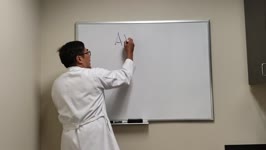 |
Aberrant Regeneration of Cranial Nerve III | 2022-03 | NOVEL - Andrew Lee Collection | Image/MovingImage |
| 3 | 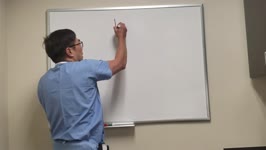 |
Acetazolamide Diamox | 2021-06 | NOVEL - Andrew Lee Collection | Image/MovingImage |
| 4 |  |
Acetazolamide in Idiopathic Intracranial Hypertension | 2019-10 | NOVEL - Andrew Lee Collection | Image/MovingImage |
| 5 |  |
Acute Bilateral Ophthalmoplegia | 2019-02 | NOVEL - Andrew Lee Collection | Image/MovingImage |
| 6 | 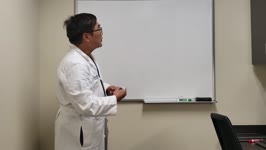 |
Acute Inflammatory Demyelinating Polyneuropathy (AIDP) vs Chronic Inflammatory Demyelinating Polyneuropathy (CIDP) | 2021-06 | NOVEL - Andrew Lee Collection | Image/MovingImage |
| 7 |  |
Adie's Tonic Pupil | 2019-02 | NOVEL - Andrew Lee Collection | Image/MovingImage |
| 8 | 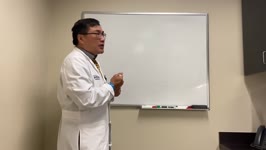 |
Akinetopsia | 2021-04 | NOVEL - Andrew Lee Collection | Image/MovingImage |
| 9 |  |
Alexander's Law | 2021-06 | NOVEL - Andrew Lee Collection | Image/MovingImage |
| 10 |  |
Alexia Without Agraphia | 2019-02 | NOVEL - Andrew Lee Collection | Image/MovingImage |
| 11 |  |
Alice in Wonderland Syndrome | 2021-06 | NOVEL - Andrew Lee Collection | Image/MovingImage |
| 12 |  |
Amaurosis Fugax | [not set] | NOVEL - Andrew Lee Collection | Image/MovingImage |
| 13 |  |
Amblyopia in Ophthalmology | [not set] | NOVEL - Andrew Lee Collection | Image/MovingImage |
| 14 |  |
Amiodarone Optic Neuropathy | 2019-10 | NOVEL - Andrew Lee Collection | Image/MovingImage |
| 15 |  |
Amiodarone Optic Neuropathy | 2022-03 | NOVEL - Andrew Lee Collection | Image/MovingImage |
| 16 |  |
Amyloid and Neuro-Opthalmology | 2019-02 | NOVEL - Andrew Lee Collection | Image/MovingImage |
| 17 |  |
Anemic Retinopathy | 2021-06 | NOVEL - Andrew Lee Collection | Image/MovingImage |
| 18 |  |
Anhidrosis | 2021-06 | NOVEL - Andrew Lee Collection | Image/MovingImage |
| 19 |  |
Anisocoria | 2019-02 | NOVEL - Andrew Lee Collection | Image/MovingImage |
| 20 | 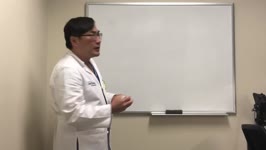 |
Anomalous Retinal Correspondence | 2022-03 | NOVEL - Andrew Lee Collection | Image/MovingImage |
| 21 |  |
Anti Phospholipid Antibody Syndrome | 2021-04 | NOVEL - Andrew Lee Collection | Image/MovingImage |
| 22 |  |
Anton Syndrome | [not set] | NOVEL - Andrew Lee Collection | Image/MovingImage |
| 23 |  |
Apraxia | 2022-03 | NOVEL - Andrew Lee Collection | Image/MovingImage |
| 24 |  |
Apraxia of Eyelid Opening | 2019-10 | NOVEL - Andrew Lee Collection | Image/MovingImage |
| 25 |  |
Arterial Dissections In Neuro Ophthalmology | 2021-04 | NOVEL - Andrew Lee Collection | Image/MovingImage |
